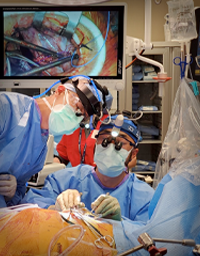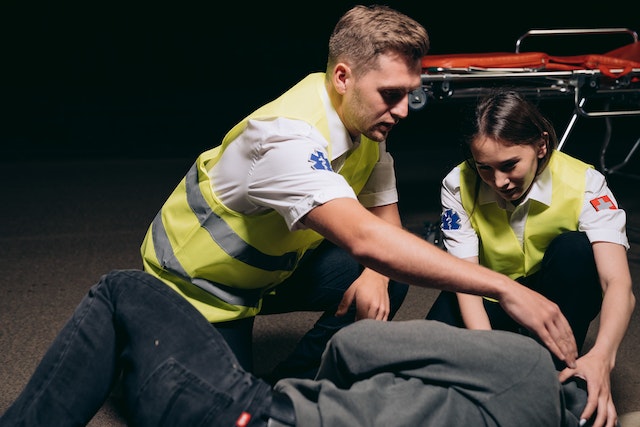
THE CIRCULATION ACADEMY
In recent years, there has been significant interest across various therapeutic areas using Temperature Management.
THE CIRCULATION ACADEMY offers clinicians and healthcare professionals a curated resource center of new and groundbreaking contributions to the conversation of Temperature Management.
This site is for education, science, medicine and discussion on temperature management topics and not all of which may be cleared by the FDA.
- Cardiac
- Neurocritical Care
- Environmental
CARDIAC-TARGETED TEMPERATURE MANAGEMENT
Targeted temperature management (TTM) is a complex intervention used with the aim of minimizing post-anoxic injury and improving neurological outcome after cardiac arrest1. Active temperature management at subnormal temperatures has been an important, evidence-based component of adult post–cardiac arrest care for 2 decades, used with the goal of mitigating secondary brain injury in patients who do not follow commands after cardiac arrest (unresponsive)2.
Professional guidelines from the American Heart Association and the International Liaison Committee on Resuscitation continue to evaluate findings from recent publications and their potential impact on the practice of temperature management in the context of overall post–cardiac arrest care.

Cardiac Resources and Tools
Listen to industry leaders with our on-demand webinars & podcasts. Access educational resources for you and your team. Access recent & relevant publications in our curated clinical library
NEUROCRITICAL CARE TARGETED TEMPERATURE MANAGEMENT
Observational studies have shown fever to be a critical predictor of adverse neurological outcomes and mortality in ischemic stroke, traumatic brain injury, post-anoxic injury, subarachnoid hemorrhage, and intracranial hemorrhage. (Azzimondi et al. 1995; Castillo et al. 1998; Hajat et al. 2000; Kammersgaard et al. 2002; Polderman 2008; Reith et al. 1996; Schwarz et al. 2000).

Neurocritical Care Resources and Tools
Targeted temperature management (TTM) is a clinical treatment strategy to control core body temperature (target temperature) for a certain duration. Proponents theorize that in some clinical situations doing so may reduce secondary brain injury.
ENVIRONMENTAL TARGETED TEMPERATURE MANAGEMENT
Extreme environmental conditions such as heatstroke and environmental hypothermia, are medical emergencies with multiple organ involvement and life-threatening illness. Uncontrolled damage to the central nervous system can result in severe cerebral edema, permanent neurological sequelae, and death. The management of environmental conditions is discussed.

Environmental Temperature Management Resources and Tools
Find educational resources and publications focused on environmental factors.
Inaugural Steering Committee
The Circulation Academy Steering Committee is led by a multidisciplinary group comprised of physician leaders with deep clinical and operational knowledge of temperature management in the critical care setting. The group carefully curates a selection of research papers, educational tools and conversations to inform, guide and support knowledge of temperature management across various applications.
Benjamin S. Abella, MD
Professor and System Chair,
Dept of Emergency Medicine
Icahn School of Medicine
at Mount Sinai

Benjamin S. Abella, MD, MPhil is an emergency medicine practitioner, internist, academic and researcher. He is currently the appointed Chair of the Department of Emergency Medicine for the Icahn School of Medicine at Mount Sinai and the Mount Sinai Health System. Dr. Abella will lead and expand the Department of Emergency Medicine’s clinical and basic research enterprise and uphold the high quality of emergency services across the Health System. Previously, he was a Professor and Vice Chair of Research at University of Pennsylvania’s Department of Emergency Medicine. He directed the Center for Resuscitation Science and the Penn Acute Research Collaboration at the University. He has participated in developing international CPR guidelines. Dr. Abella has published over 200 scholarly papers regarding cardiac arrest, myocardial perfusion, therapeutic hypothermia, CPR delivery and resuscitation. He is a fellow of the European Resuscitation Council.
Nicholas Johnson, MD
Critical Care & Emergency
Medicine
UW - Harborview

Nick Johnson, MD, is a physician in the medical intensive care unit, trauma intensive care unit, ECMO team, and emergency department at Harborview. He is also the UW’s associate program director for the Critical Care Medicine Fellowship and a UW assistant professor of Emergency Medicine and Pulmonary, Critical Care and Sleep Medicine. Dr. Johnson is a member of the American College of Emergency Physicians, Society for Academic Emergency Medicine, Society of Critical Care Medicine and the American Heart Association. Dr. Johnson has been cited over 4000 times for his scholarly work in cardiac arrest, emergency medicine among other areas.
Sarah Wahlster, MD
Neurocritical Care
UW - Harborview

Dr. Wahlster, MD, obtained her medical degree at the Ruprecht-Karls Universität Heidelberg, followed by a post-doc in Epigenetics of Neurodegenerative Disease at Harvard Medical School. She completed neurology residency and neurocritical care fellowship at MassGeneral/Brigham in Boston. She is now the fellowship director and the section head of Neurocritical Care in the Department of Neurology at University of Washington. Her academic interests include Mechanical Ventilation in Acute Brain Injury, Extubation and Tracheostomy Decisions in the NeuroICU, Long-Term Outcomes of Patients and their Families After Severe Acute Brain Injury, Neuroprognostication after Cardiac Arrest, Neurological Care in Resource-Limited Settings, and Medical Education.
STAY UP TO DATE ON OUR NEW CONTENT, PODCASTS, WEBINARS, & MORE…
Subscribe to receive notifications on upcoming events, new publications, & more!
- Taccone FS, Picetti E, Vincent JL. High Quality Targeted Temperature Management (TTM) After Cardiac Arrest. Crit Care. 2020 Jan 6;24(1):6. doi: 10.1186/s13054-019-2721-1. PMID: 31907075; PMCID: PMC6945621.
- Panchal AR, Bartos JA, Cabañas JG, Donnino MW, Drennan IR, Hirsch KG, Kudenchuk PJ, Kurz MC, Lavonas EJ, Morley PT, O’Neil BJ, Peberdy MA, Rittenberger JC, Rodriguez AJ, Sawyer KN, Berg KM; Adult Basic and Advanced Life Support Writing Group. Part 3: Adult Basic and Advanced Life Support: 2020 American Heart Association Guidelines for Cardiopulmonary Resuscitation and Emergency Cardiovascular Care. Circulation. 2020 Oct 20;142(16_suppl_2):S366-S468. doi: 10.1161/CIR.0000000000000916. Epub 2020 Oct 21. PMID: 33081529.
